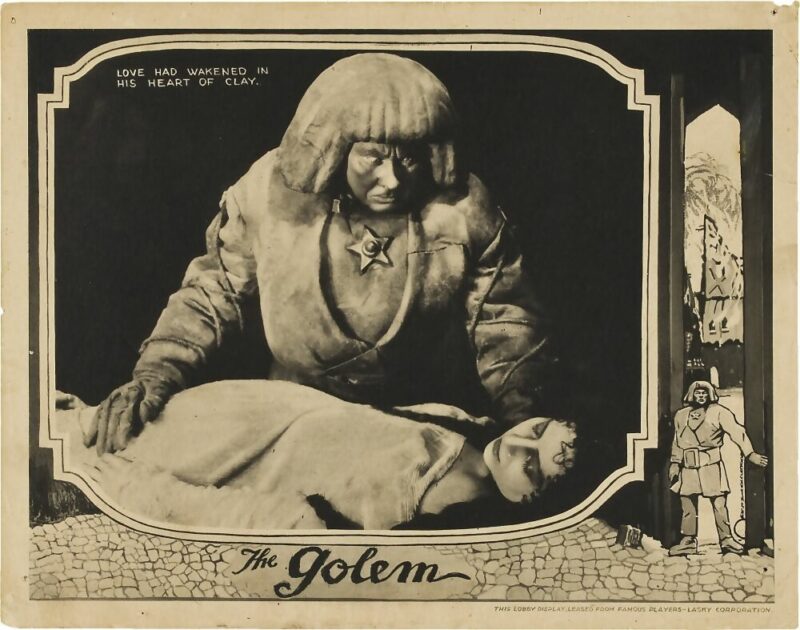
You might have heard of Nosferatu and The Cabinet Of Dr Caligari – but here are some silent horror films for you to discover…
Halloween may be over, but that doesn’t mean horror is. After all, the nights are still cold and dark. There are spiced scents and bonfires that tingle the atmosphere. Autumn is a truly magical time to sit with your blanket, cozy up next to your loved ones, and watch some beguiling horror films.
This week, I would like to take a look at some silent horrors – movies that don’t need sound to send a shiver down your spine. Now, we all know the infamous favourites – the shadow of Nosferatu (1922) as he creeps up the wall to ensnare the sleeping damsel. The wide-eyed killer who stalks expressionist streets in The Cabinet Of Dr Caligari (1920) is also wildly celebrated and revered. I also covered Häxan (1922) – a documentary about the history and mythology behind witchcraft, which is as horrifying as it is educational – earlier this year for my piece on folk horror.
So, for this outing, I’m looking at other horror movies of the era and yes, perhaps an absolute favourite of mine.
Read More: A celebration of of classic folk horror
The Merry Skeleton (1898)
Dir. Louis Lumière
A delightful Victorian “horror” film that might be perfect to watch with your little ones. Similar to how The Devil’s Castle was more of a fun farce than a disturbing thriller, Lumière’s ditty is a charming one-minute-long film – one that I feel showcases the more playful side of Victorian-era cinema.
The Merry Skeleton – or Le Esqueltte Joyeux – sees a playful pile of bones miraculously come to life and start dancing across the screen. Throughout, his arm, skull, and more fly off in wild directions.
It’s silly, but it’s highly enjoyable and worth putting on alongside that popular Halloween song, Spooky Scary Skeletons.
The Golem: How He Came Into The World (1920)
Dir Paul Wegener & Carl Boese
Wegener is known as one of the directors who powered forward the German Expressionist movement with his unforgettable films. He’s also the titular Golem in the 1915 lost film, the 1917 parody, and this 1920 remake. The Golem: How He Came into the World sees a rabbi in 16th century Prague create a monster out of clay and bring him to life in order to protect the Jewish population from persecution.
This mystical tale is told against a backdrop of expressionistic sets that are captivating and gleefully embellished. The lofty walls of the Ghetto add to this visually spectacular film as the bob-cut Golem bounds down the streets in this tale of astrology and mysticism.

The Magician (1926)
Dir. Rex Ingram
Speaking of Paul Wegener, he appeared in just one Hollywood film as an actor – Rex Ingram’s The Magician – a movie that’s madcap and utterly entertaining.
The Magician revolves around Margaret Dauncey, a young woman who’s caught between two loves – the beguiling prowess of a charlatan magician, and a handsome surgeon named Burdon who changed her life forever.
Though criticised on its release, and perhaps by some people in the modern day too, The Magician has some fun moments including impressive gags and fiendish sequences. There’s a Gothic air to it that’s inescapably compelling. Like Margaret, there’s no denying the prowess of The Magician.
A Page Of Madness (1920)
Dir. Teinosue Kinugasa
This one certainly lives up to its title. Sometimes modern day audiences look back on silent horror films with an air of superiority, as though nothing made in the 1920s could be as terrifying as movies made today.
There are genuinely moments in A Page Of Madness, however, that left me spooked. Kinugasa’s impressionism and scattershot of surreal, mind-boggling images revolve around a man who takes a job at an asylum, hoping to free his wife.
An eerie and spine-tingling movie with imagery that will stay with you long after viewing, A Page Of Madness is an enthralling descent into insanity.
Dr Jekyll And Mr Hyde (1920)
Dir. John S. Robertson
Do you think I’d shy away from my favourite story of all time? Absolutely not! After all, one of the first full-length adaptations of Robert Louis Stevenson’s famous tale of a doctor transforming into a horrifying evil is to be celebrated.
Starring John Barrymore at the height of his powers, and based on the 1887 stage play by Thomas Russell Sullivan, the film revolves around a young Dr Jekyll who believes that he can split his two selves. In doing so, he unwittingly creates a monster who indulges in many dark vices. Two women – Millicent and Gina – fall in love with his two sides.
Barrymore is electrifying as the two titular men grappling for the ownership of one soul. As Jekyll, Barrymore is handsome and bright-eyed, whilst as Hyde, Barrymore perfectly captures the bestiality and brutality of his alter ego, despite being buried under a mountain of prosthetics.
Finally, a shout out goes to German adaptation of Dr Jekyll & Mr Hyde, The Head Of Janus (1920).
Directed by FW Murnau, who also gave us Nosferatu, it starred the incredible Conrad Veidt as Dr Jekyll. Sadly, unless a copy’s unearthed from a dusty box somewhere, it’s unlikely any of us will get to see it – like so many films of its era, The Head Of Janus was sadly lost many years ago.






